
A book covering the start of Western Philosophy and the Ancient World.
- Subject:
- Arts and Humanities
- Philosophy
- Material Type:
- Textbook
- Author:
- Dr. Noah Levin
- Date Added:
- 06/21/2022

A book covering the start of Western Philosophy and the Ancient World.

What is thinking? It may seem strange to begin a logic textbook with this question. ‘Thinking’ is perhaps the most intimate and personal thing that people do. Yet the more you ‘think’ about thinking, the more mysterious it can appear. It is the sort of thing that one intuitively or naturally understands, and yet cannot describe to others without great difficulty. Many people believe that logic is very abstract, dispassionate, complicated, and even cold. But in fact the study of logic is nothing more intimidating or obscure than this: the study of good thinking.

An Introduction to Ethics Open Resource
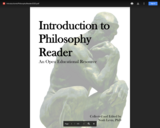
Philosophy (from Greek φιλοσοφία, philosophia, literally "love of wisdom") is the study of general and fundamental problems concerning matters such as existence, knowledge, values, reason, mind, and language. The term was probably coined by Pythagoras (c. 570 – c. 495 BC). Philosophical methods include questioning, critical discussion, rational argument and systematic presentation. Classic philosophical questions include: Is it possible to know anything and to prove it? What is most real? However, philosophers might also pose more practical and concrete questions such as: Is there a best way to live? Is it better to be just or unjust (if one can get away with it)? Do humans have free will?
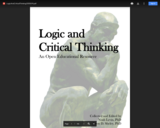
Logic and Critical Thinking is primarily a philosophy textbook but it covers a number of topics that overlap with argumentation including deduction and induction, fallacies, proofs, and kinds of arguments. Due to licenses that apply to certain sections of this book, it is safest to presume this work as a whole to be under a CC-BY-NC-ND license.
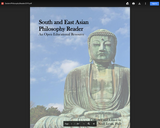
Excerpted primary texts from the East Asian philosophical traditions, including: Buddhism, Hinduism, Jainism, Shinto, Confucianism, Taoism, Legalism, Sikhism, and historical Zoroastrianism.

I have organized this textbook around the way I teach my introductory course in the philosophy of religion. Since I got to design this textbook and it’s for use in my own courses, it directly follows the order in which I teach the topics and each chapter makes up the reading assignment for about 1.5 hours of class time. In other words, I meet with students for thirty 1.5-hour sessions in a semester (hence there are 30 chapters in this work), and for the first meeting, we read and discuss chapter 1, for our second we cover chapter 2, then chapter 3, and so on. It leaves the guess work out of what we cover and when we cover it and keeps things very organized and streamlined. I tell you this now to give you some insight into the way I approach my classroom and time with my students. Since this is intended for an intro-level course, keeping things on track, moving, and organized in this way has proved to be very beneficial for my students.

An Open Introduction to Ethics
Word Count: 173025
(Note: This resource's metadata has been created automatically by reformatting and/or combining the information that the author initially provided as part of a bulk import process.)
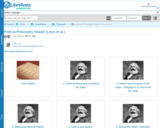
In terms of a political entity, a state is any politically organized community living under a single system
of government. States may or may not be sovereign. For instance, federated states are members of a
federal union, and may have only partial sovereignty, but are, nonetheless, states. Some states are
subject to external sovereignty or hegemony, in which ultimate sovereignty lies in another state. States
that are sovereign are known as sovereign states.
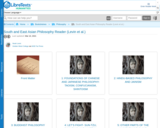
It is Euro-centric to refer to all the Philosophies of Asia as “Eastern” as it unfairly groups the quite various Philosophies that developed in West Asia (Zoroastrianism), South Asia (Buddhism, Jainism, Hinduism, Sikhism), and East Asia (Ch’an Buddhism, Taoism, Confucianism, Shintoism) into a single unit that implies they are quite similar. Other than their relative geographic proximity, the various philosophies are, in many ways, more different than those philosophies that have been developed in Europe and the other parts of the world. This first Unit explores some of the older philosophical
viewpoints that underlie much of the philosophy that has been developed in East Asia, particularly China and Japan. These are Taoism, Confucianism, and the philosophical underpinnings of the Shinto religions.